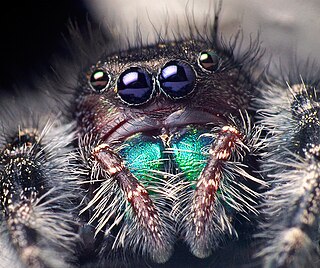
Phidippus is a genus in the family Salticidae. Some of the largest jumping spiders inhabit this genus, and many species are characterized by their brilliant, iridescent green chelicerae. Phidippus is distributed almost exclusively in North America, with the exception of two exported species. As of January 2021, there were about 80 described species in the genus. Species previously described in Phidippus which are found in India and Bangladesh do not belong in this genus.

Tyrannus is an immortal supervillain appearing in American comic books published by Marvel Comics.

Phidippus audax is a common jumping spider of North America. It is commonly referred to as the daring jumping spider, or bold jumping spider. The spider belongs to the genus Phidippus, a group of jumping spiders easily identified both by their relatively large size and their iridescent chelicerae.
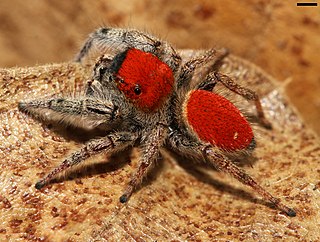
Phidippus whitmani is a species of jumping spider.
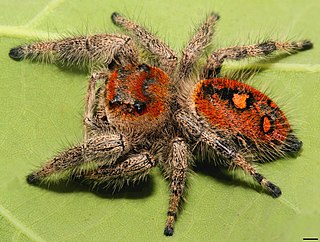
Phidippus regius, known commonly as the regal jumping spider, is a species of jumping spider in eastern North America.
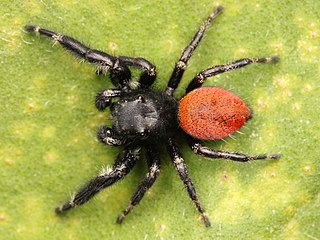
Phidippus johnsoni, the red-backed jumping spider, is one of the largest and most commonly encountered jumping spiders of western North America. It is not to be confused with the unrelated and highly venomous redback spider.

Phidippus californicus is a species of jumping spider. It is found in the southwestern United States and northern Mexico.

Phidippus octopunctatus is a jumping spider that occurs in the United States and Mexico, mostly in the Great Basin Desert. It is among the largest jumping spiders found in North America, approaching 25 millimetres (0.98 in) in body length. They are gray to brownish-gray in color.

Phidippus otiosus is a species of jumping spider that is found in southeastern North America. It is primarily a tree-living species. Females reach a body length of about 16 mm. Its iridescent fangs can range in color from purple to green.

Phidippus putnami is a species of jumping spider found in the United States.
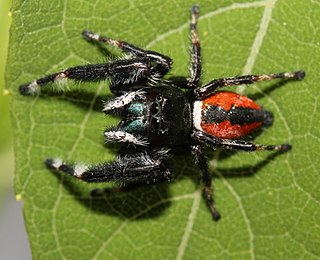
Phidippus clarus is a species of jumping spider found in old fields throughout eastern North America. It often waits upside down near the top of a plant, which may be useful for detecting prey, and then quickly jumps down before the prey can escape. The spider is one of 60 species in the genus Phidippus, and one of about 5,000 in the Salticidae, a family that accounts for about 10% of all spider species. P. clarus is a predator, mostly consuming insects, other spiders, and other terrestrial arthropods.

Phidippus purpuratus is a species of jumping spider in the family Salticidae. It is found in the United States and Canada.

Phidippus carneus is a species of jumping spider in the family Salticidae. It is found in the United States and Mexico.

Phidippus insignarius is a species of jumping spider in the family Salticidae. It is found in the United States.
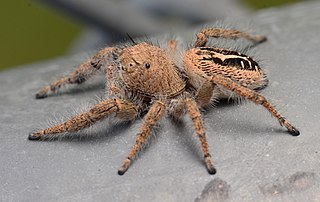
Phidippus texanus is a species of jumping spider in the family Salticidae. It is found in the United States and Mexico.
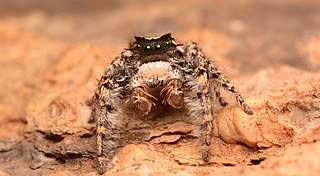
Phidippus carolinensis is a species of jumping spider in the family Salticidae. It is found in the United States and Mexico.
Phidippus comatus is a species of jumping spider in the family Salticidae. It is found in North America.

Phidippus apacheanus is a species of jumping spider in the family Salticidae. It is found in the United States, Mexico, and Cuba.

Phidippus pacosauritus is a species of jumping spider found in Mexico. It was first described by G. B. Edwards in 2020.

















